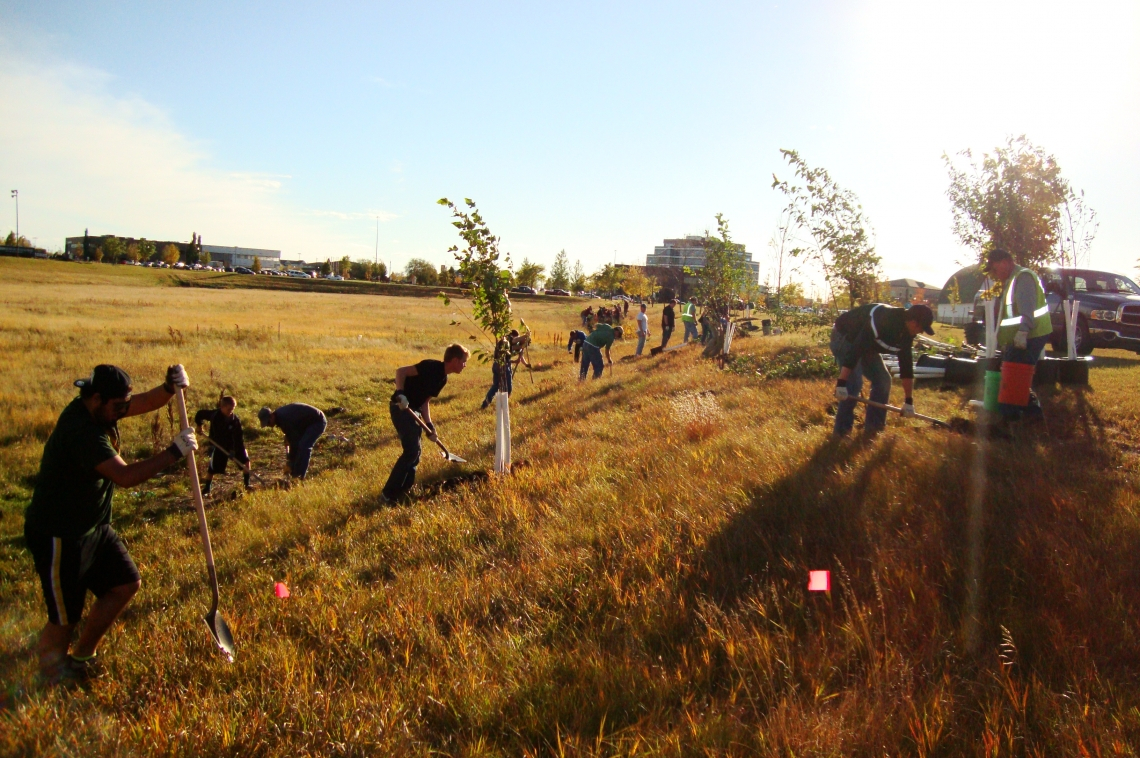
In 2019 we shared some amazing stories, and below we take a look at the most popular blogs of the year. From ArtPlace’s next steps, to how to find funding, to how farming and arts go hand-in-hand, these blogs are as wide-ranging as the field of creative placemaking.
#10. Six Reasons Governments Should Collaborate with Artists
It’s hard work running a city, county, or state—and even harder to live in one that’s not well-run. How can creative placemaking practitioners access people in positions of authority? Who are the artists and organizers blazing powerful new trails in their communities? How can we all use our inherent power to better effect positive change where we live? Read civic artist Mallory Nezam’s rundown of ways artists can help governments solve big problems, function more smoothly, and elevate the people and places they serve.
#9. Introducing Local Control, Local Fields
In May, Maura Cuffie, ArtPlace’s Senior Program Officer, introduced a new initiative: Local Control, Local Fields. This people-powered investment in locally controlled resources aims to strengthen fields of practice in distinct geographies around the U.S. Learn how our approach was developed, what makes it different, and what to watch for in the months ahead.
#8. Culture-Based Affordable Housing Strategies
Many community-based groups have found arts strategies crucial in their efforts to stabilize communities who are particularly vulnerable to displacement, including those weakened by historic or ongoing neglect or uneven funding. Since the 1980s, Houston’s Project Row Houses has been integrating arts and culture to preserve and celebrate a mixed-income African American community in the historic but rapidly gentrifying Third Ward neighborhood.
#7. Finding Funding in Unlikely Places
Sarah Allan, John Davis, Christa Drew, and Bob Reeder share their best tips and case studies to help creative placemaking practitioners find financial support from a variety of unlikely sources. This recap of their session at the ArtPlace 2018 Annual Summit lists diverse funding sources, including: crowdfunding, tax credits, bond financing, farm bureaus, utility conglomerates, hospitals, and more.
#6. Arts, Culture, and Community Mental Health
Jamie Hand and Tasha Golden look at how arts and culture strategies can help provide solutions to public health challenges faced by communities across the United States—particularly low-income, immigrant, rural, and indigenous communities, and communities of color. This summary of their article in Community Development Innovation Review provides highlights and offers example projects.
#5. Returning to Our Ancestral Homelands
In rural Weogufka, Alabama, a reclamation of Indigenous Maskoke land and reestablishment of the traditional village system is taking place. The organization Ekvnv-Yefolecvlke is a Maskoke collective committed to embracing the role of protecting and reviving traditional relationships to the earth while revitalizing language and culture.
#4. Farmers as Artists, Artists as Farmers
Hmong French American artist Oskar Ly founded ArtCrop, an art and food CSA in Minnesota. By continuing and innovating on the traditions of her farmer-artist forebears—and contemporaries—Ly is inviting local farm share subscribers to enjoy “a more rooted cultural experience.”
#3. Building the Field: Arts and Public Health
Art and health are both so important to the human experience. Health is about more than washing your hands to avoid disease: it’s about being able to live your fullest life and explore all the possibilities. That’s exactly what art is about, too. To build the life-changing field of arts and public health, the University of Florida’s Creating Healthy Communities: Arts + Public Health in America initiative is bringing diverse stakeholders together, conducting in-depth research, and sharing out best practices.
#2. Five Things the Arts Can do for the Environment
Environmental sustainability is all about the health, safety, and long-term integrity of the places where we live, work, and play. We are increasingly realizing that sustainability isn’t the purview of a single sector working in isolation, but a shared responsibility for changing how we live in relation to our natural environment and to each other. Environmental leaders are eagerly looking for new ideas, partners, methods, and tools that can help propel the changes—social, cultural, economic, political, and physical—that will help get us where we need to go.
#1. What’s Next for ArtPlace America?
It’s no surprise that this was our top blog of the year! In May of 2019 we announced the next steps ArtPlace would take to culminate a decade of work. In 2020 we’re celebrating 10 years of investing in artists as allies in helping to build equitable, healthy and sustainable communities. As an update to this post, ArtPlace executive director Jamie Bennett recently reflected on this work with Mike Scutari, of Inside Philanthropy, who has been a consistent chronicler of the growth of our field.
To date, ArtPlace has invested over $100 million in 285 projects and organizations across communities of all sizes, including 45 states, the District of Columbia, American Samoa, Puerto Rico, and the US Virgin Islands. ArtPlace is also investing in artists, cross-sector initiatives, higher education, local assemblies, local governments, and state arts agencies. A number of the foundations in the ArtPlace partnership have started a conversation about what they might like to do next, to build upon and extend these efforts.
Next year, ArtPlace celebrates 10 years of work at our national summit in Minneapolis-St. Paul, MN the week of October 26, 2020. We hope you’ll mark your calendar and join us!





